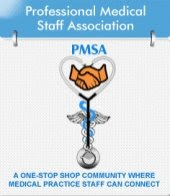Is your provider often waiting on others? Do they have a lot of down time between patients? This is often lost revenue when the physician is waiting on staff or patients. What can be done? Training staff to do as much as possible before the visit is one of the best ways to avoid this problem. Staff should make all of their follow-up calls and do paperwork when the physicians are not in the office or at a scheduled time. This will reduce the chance that staff is caught up handling a problem for one patient while an entire waiting room sits. It is also good to have staff cross-trained to help out when one is busy and another has time on his or her hands. After a bad day, sit down with the staff and discuss what happened, ask what they think could be done different. Don’t be surprised if they have some suggestions for you as well. Consider having the staff keep track of how long it takes them do each task, then review the data and see how duties can be shifted. If might be necessary to move a job from one person to another one, move it to a different time, or stop the activity all together.
If the physician is scheduled to come from the hospital to the office, let staff know of when arriving and of any delays. Staff should relay this information to the patients. Nothing is more frustrating to a patient that has been waiting for a long time, only to learn that the doctor is not even in yet. If there is going to be a long delay allow the patient the option of leaving and coming back or rescheduling to a different day. Make sure staff asks the patient if they feel it is alright to wait. Patients will usually let you know if they need the concern addressed right away or if they want to wait, but let them help to make that decision.
Another problem can be patients being a no-show or late, this can often be avoided by having staff call and remind patients of their appointments the day before. When staff calls they can also remind patients to bring list of medications, insurance cards, co-pays, and any other information that might be needed.
Take a look at the patient schedule, maybe it needs to be adjusted. Most physicians’ average around four visits per hour, look if there are in any gaps in the schedule. If a gap does occur could dictation or something else that needs the physician attention be done? To save time dictation can often be done while with the patient, there are of course exceptions to this.
When it comes to patient education, delegate as much of this to staff as possible. Be sure that the handouts are up to date and accurate. Years ago when I surveyed patients I discovered that much of the information that they received about their condition came from the handouts in the waiting room. Many patients do not feel comfortable asking a lot of questions and feel that if the information was obtained at the physician office, it must be accurate. For that reason it is important to check the material on a regular basis and remove old data. I would also recommend a disclaimer on the rack that just because some information provided is from a pharmaceutical company does not mean that that medication is right for every person with that condition and that the physician will determine what drug is right for you.
As a manager trying to keep all of the physicians on schedule nothing is probably more frustrating than overhearing a patient ask the physician to see a family member while they are there or bring in a really long list of many problems. Over the years I have seen many different ways of handling this problem. One of the best is to have a sign out front letting the patients know that only 1 person will be seen at a time. Let the patients know that you can only see those patients that are scheduled-not the entire family. Be firm and let them know, this will avoid problems in the future, often these people are repeat offenders.
The other issue is multiple problems that they want addressed. Remind the patient that you are on a time restriction and if needed, they can be scheduled for a longer time period. Ask if there is something that they feel must be addressed right now or is it an ongoing (chronic) problem. Most of the add-on problems can be avoided by having staff going over all of the concerns and doing a preliminary evaluation prior to the physician coming into the exam room. By training the staff to do this and write it out in short notes all of the patient’s concerns can be gone over in a shorter amount of time. Have your staff fill out a worksheet and if needed they can add the additional concerns. When the patient sees you going over the list they feel that you and the office cares and is addressing their problems. By the staff writing it out you can look it over before going into the room and can get an idea of what you will need to do while with the patient and will help to know what to ask about. Another method is to have staff make a copy of the patient’s list and have the staff go over it, making notes on the copy for you to review.
The biggest thing for everyone to remember is that it can be lost revenue when the physician is left waiting. By everyone working together this wasted time can be reduced and increase productivity which can increase profits.
Monday, July 6, 2009
Subscribe to:
Post Comments (Atom)

No comments:
Post a Comment